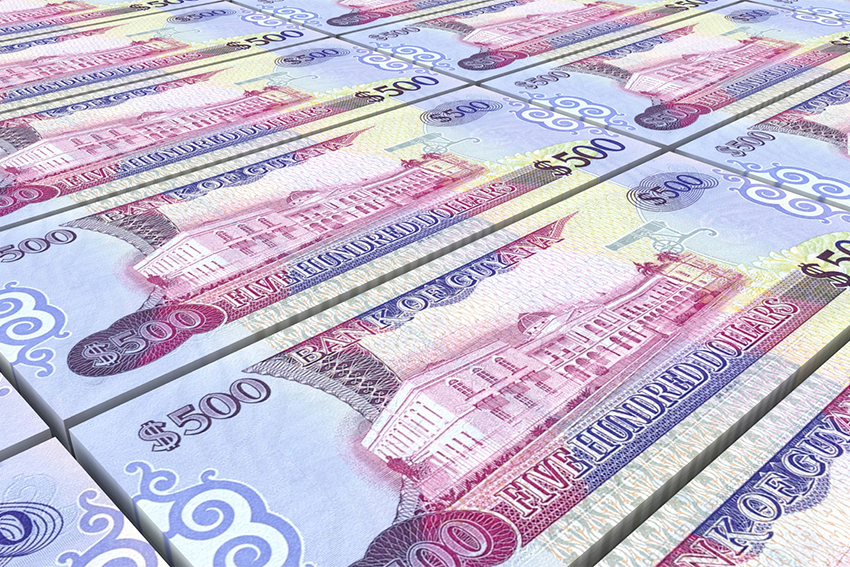While the rest of the continent is expected to show sluggish growth in the coming years, the Guyanese economy is set to build on its 3% growth in 2015 and feature among the top-five performers in Latin America, as its prepares to diversify its economy and oil and gas production begins

Leading analysts predict that Guyana’s economy will become one of the region’s top five performing and among its fastest expanding over the next five years. Last year’s 3% increase in GDP compares with a lackluster 0.8% for Latin America as a whole, and is followed by a 2016 growth target of 4.4%, according to Guyana’s budget statement in January. This is more than double the 2% growth for the continent estimated by the IMF, which has lauded Guyana’s “strong macroeconomic performance.”
The country’s economy is largely reliant on its agriculture and extractive industries, especially on revenues from the export of sugar, gold, bauxite, shrimp, timber, and rice, which represent almost 60% of the country's GDP. As such, it is looking to diversify its economic mix and reduce its susceptibility to global fluctuations in commodity prices.
A founding member of Unasur (the Union of South American Nations) and Caricom, and also its official secretariat, the trade blocs expanded Guyana’s export options with new markets for its raw materials, experiencing positive growth almost every year since 2006, while managing to keep inflation under control. During 2016, the government expects the level of inflation to stay low, at around 2%.
Another factor helping to stabilize the Guyanese economy over the past decade came in March 2007, when the Inter-American Development Bank, Guyana's main donor, canceled almost $470 million debt, equivalent to 21% of GDP, along with other Highly Indebted Poor Country (HIPC) debt relief. The move brought Guyana’s debt-to-GDP ratio down from 183% in 2006 to 67% in 2015.
Having weathered the global financial crisis of 2008 and highly challenging external factors recently, such as the international drop in commodity prices and China’s slowdown affecting demand for the resource-rich country’s natural exports, Guyana has nevertheless managed to average an annual growth rate of 4.6% over the past eight years.
Fresh approach
With a “fresh approach” to politics and the economy from the new government sweeping in last year, a push for more private enterprise and economic diversification, and the discovery of substantial petroleum deposits last spring, Guyana’s economic expansion looks set to gain momentum.
“Growth will continue over the next few years, and hopefully hit double digits within five years as oil production comes on line,” says Gobind Ganga, Governor of the Bank of Guyana. “We have more of a diversified economy than many of our neighbors in the region, and that along with the macroeconomic stability that has been achieved over the last 10 years will win investor confidence, spurring further growth.”
Petrodollars
The Guyana Suriname basin has been identified as having the second highest resource potential among the world’s unexplored basins. In May 2015, US oil giant ExxonMobil’s announcement of finding more than 295 feet of high-quality oil-bearing sandstone reservoirs at one of its wells 120 miles offshore Guyana raised hopes of significantly increasing quality of life for its 800,000 citizens. The government intends to establish a sovereign wealth fund before production comes on line to direct petroleum revenues into areas such as infrastructure and spread the benefits countrywide.
The find also underscores the close relationship between Guyana and the United States, its number one trading partner. Around 22% of the country’s total imports come from the States, and exports to the US account for over 30% of Guyana’s total.
“That percentage will definitely increase once ExxonMobil goes into production of oil,” says Winston Jordan, Guyana’s Minister of Finance. “The US is an important trading partner. Indeed, a large part of our diaspora population lives in the US so we will always see and treat the relationship with the US in a beneficial manner.”

FDI
Foreign direct investment increased 19% in 2015, and it’s a trend Mr Jordan would like to see continue, as the government pushes for greater economic diversification to protect the economy from fluctuations in prices for raw commodities and avoid relying on future oil-based revenues. He points out that efforts made over the past decade have already enabled the services sector to overtake agriculture as a percentage of GDP.
However, he acknowledges that challenges remain, which the government is tackling, such as institutional reforms, affordable renewable energy generation, and a need for better infrastructure. “Efforts are being made to tackle many of the impediments to investment,” says Mr Jordan. Legal and regulatory reforms to improve security and facilitate bank credit to the private sector are ongoing, and have included a recent anti-money laundering bill. The Guyana Stock Exchange, Caricom’s newest exchange, could be more fully developed by implementing and adhering to international best practices.
Hinterland
Infrastructure, especially to connect inland regions of Guyana, is a must. “Though the bulk of the population lives on the coast, the wealth of the country is in the hinterland,” says Mr Jordan. “We have very few water links with the rest of our country. Most of the connections to the hinterland are through rugged passages or by air. The focus now is to construct roads, refurbish airstrips and upgrade river transportation.”
Announcing the 2016 $230-billion Budget in January, Mr Jordan highlighted the importance of connecting the whole country to a better future, stating: “The government will be investing over $4 billion, in support of the Plan of Action for Hinterland Development. In excess of $280 million has been allocated to promote economic prosperity, tourism development and preserving cultural identity. This sum is inclusive of grants for 211 indigenous communities that will build village economies and fund eco-tourism projects specifically for our nation’s 50th independence celebration.”
As such, investors are encouraged to look beyond Guyana’s coastline and waters, and go deeper into its rich potential.
0 COMMENTS